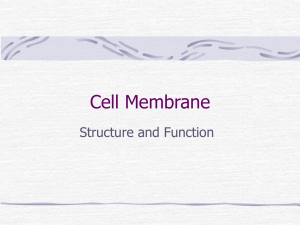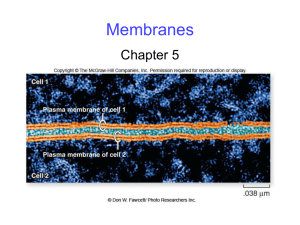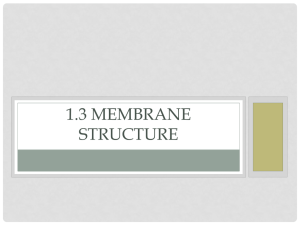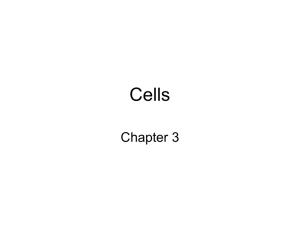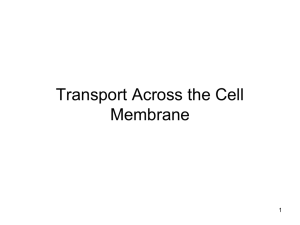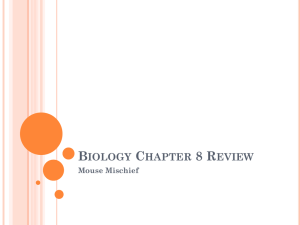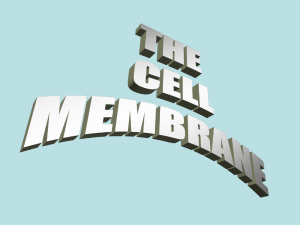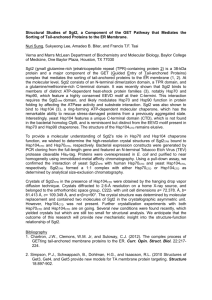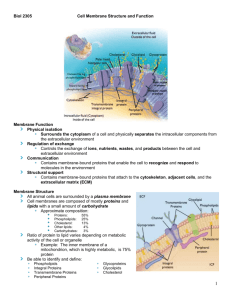The yellow structure represents the hydrophillic or water loving
advertisement
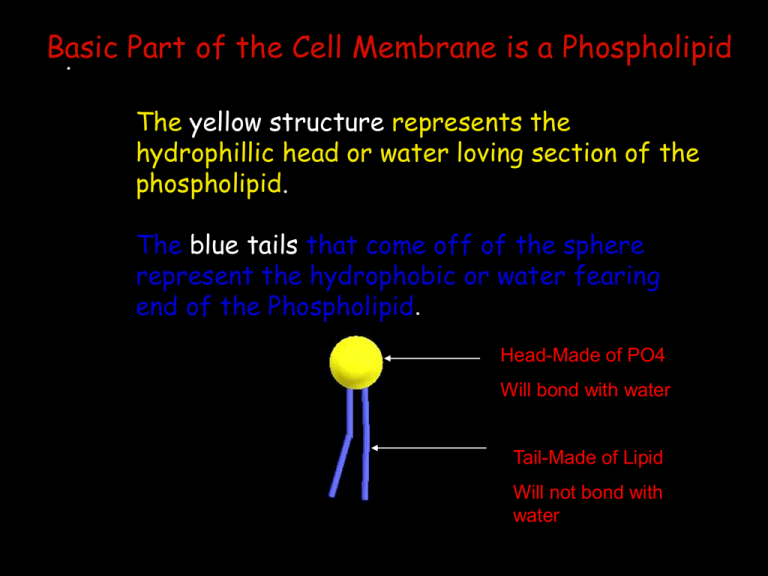
Basic Part of the Cell Membrane is a Phospholipid . The yellow structure represents the hydrophillic head or water loving section of the phospholipid. The blue tails that come off of the sphere represent the hydrophobic or water fearing end of the Phospholipid. Head-Made of PO4 Will bond with water Tail-Made of Lipid Will not bond with water If you mix phospholipids in water they will form these double layered structures. . The hydrophillic ends will be in contact with water. The hydrophibic ends will face inwards touching each other. Floating around in the cell membrane are different kinds of proteins… . Generally these proteins structurally fall into catagories... 1.Transport proteins that regulate transport and diffusion Transport Proteins Come in 2 Forms… A. Channel Protein Channnel proteins act as a passive pore. Molecules will move through the opening in a process called diffusion. This requires no energy, molecules move from an area of high concentration to an area of low concentration. B. Carrier Protein Carrier proteins do not extend all the way through the membrane. They move specific molecules through the membrane one at a time. Channel Proteins Move Molecules in Different Ways… molecule that is moving naturally into the cell through diffusion is used to drag another molecule into the cell. In this example glucose hitches a ride with sodium. 2. Marker proteins that identify the cell to other cells Why Marker Proteins are Important… 1. Marker proteins extend across the cell membrane and serve to identify the cell. 2. The immune system uses these proteins to tell friendly cells from foreign invaders. They are as unique as fingerprints. 3. They play an important role in organ transplants. 4. If the marker proteins on a transplanted organ are different from those of the original organ the body will reject it as a foreign invader. Receptor proteins that allow the cell to receive instructions 1. These proteins are used in intercellular communication. 2. In this picture you can see the a hormone binding to the receptor. 3. This causes the receptor protein release a signal to perform some action. Cholesterol is a Part of the Cell Membrane 1. Steroids are sometimes a component of cell membranes in the form of cholesterol. 2. When it is present it reduces the fluidity of the membrane. 3. Not all membranes contain cholesterol Plan For Today… 1. Using the Picture on the Smartboard, draw a picture of the cell membrane 2. Make sure you include phospholipids, all kinds of proteins, and cholesterol. 3. Color and label all parts properly. 4. Finish and turn in. The Cell Membrane The Cell Membrane Receptor Proteins http://www.youtube.com/watch?v=bU4955rL v_8 Fluid Mosaic Model http://www.stolaf.edu/people/giannini/flashan imat/lipids/membrane%20fluidity.swf




